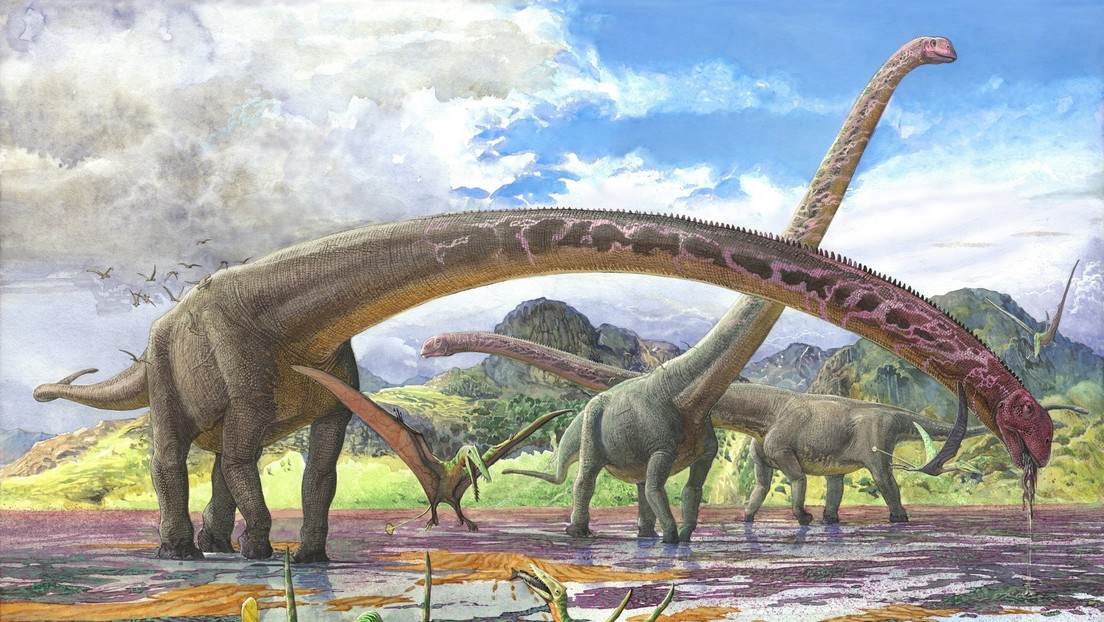 A recent study has determined that the neck of a sauropod that lived in the territory of present-day China reached more than 15 meters in length.
A recent study has determined that the neck of a sauropod that lived in the territory of present-day China reached more than 15 meters in length.
The specimen of the herbivorous dinosaur 'Mamenchisaurus sinocanadorum' was discovered in rocks approximately 162 million years old in the Uyghur Autonomous Region (Xinjiang), in the northwest of the country. For comparison, its neck was about six times as long as a giraffe's and 1.5 times as long as a London double-decker bus.
It is the "longest neck that can be confidently inferred for any known sauropod," says a statement from the research team.
The experts studied the remains found of part of the neck, a giant rib and various skull bones, including the lower jaw of the animal. The lack of a complete skeleton has made it difficult for scientists to determine the full size of this specimen.
To restore its appearance, the researchers used the bones of a related sauropod species, in the genus Xinjiangtitan, which was later found in the same region with its complete neck skeleton, according to a study published in the Journal of Systematic Palaeontology.
By comparing the proportions of the vertebrae found from the two species, the researchers were able to estimate that Mamenchisaurus's neck was approximately 15.1 meters long.
Study of Mamenchisaurus sinocanadorum has provided some clues as to how sauropods managed to develop such long necks and stout bodies without collapsing under their own weight. Most of them had air-filled bones, which would have lightened their skeletons by removing heavy marrow and bone tissue.
The results also indicated that the neck of this species could only be raised at an angle of 20 to 30 degrees. But even in this case, they could eat leaves at a height of 7.5 to 10 meters above the ground, according to Paul Upchurch, professor of paleobiology at University College London. (Text and photo: Taken from RT)